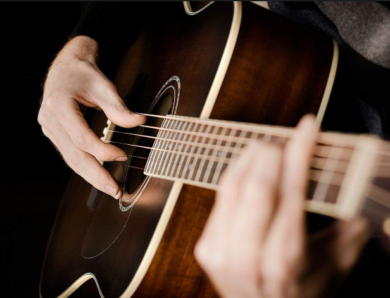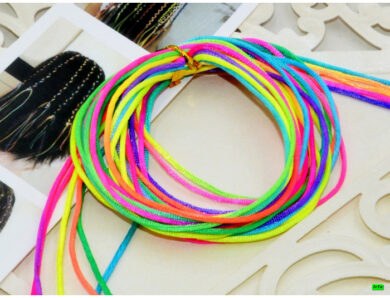How to use overlock and sew knitwear
Buy a good overlock - does not mean to get a perfectly sewn product with a perfect Obmetko. It is important to carefully read the instructions and adjust the operation of the device, as well as choose the right threads. The machine can be multifunctional and perform several types of seams, each of which requires individual regulation. Consider in more detail, how to use overlock.
threading
The first difficulty, which happy owners of overlock machines face is thread filling. It is quite complicated, especially for beginners. In the Internet - resources, professional masters offer to watch videos with demonstrations of the correct settings. The scheme of filling of threads on an overlock is described in detail in the instruction. But there is a big plus - it is enough to do once according to the scheme, and then you can tie the threads of each new spool to the already filled. If you consider the steps step by step, it will look like this:
- cut the thread from the old spool;
- tie the thread of the new spool to the old one;
- lift the foot and pull the new thread through the looper, to make it easier to pass the knot;
- cut the knot near the eye of the needle and refill.
seam selection
The next step is to choose a seam allowance depending on the structure of the fabric. If the usual non-professional overlock is used, it will only be 2 needles and 2 looper. This machine can perform 3 and 4-point seams. The choice depends on the material used and the purpose of the seam.
If it is necessary to trim the edges of the fabric and sew at the same time with another piece, a 4-thread suture is used, where involved 2 needles. In this case, the seam is strong, when the fabric is stretched, it does not tear. It is often used, to sew knitwear on overlock. Less expensive in terms of thread - 3-thread suture. The area of application is slices, which require only edge processing.
For thin fabric it is better to make a seam as soon as possible, to do this, remove the left needle. When using dense or loose fabrics, you can remove the right needle, to get a wider seam.
Having determined the type of seam and tucked threads, you can start executing the stitch. For beginners it is better to train on pieces, performing a straight line. So, can be seen in advance, how the chosen seam on fabrics will look and be convinced, that the refueling is done correctly, and the threads do not break.
How to write on overlock
Working on an overlock can be easy, if not the first meter of fabric is processed with its help. Even experienced craftsmen have to readjust when switching to a new overlock machine. If the product was previously sewn by one method, on a new machine everything can be different. You still need to train on the edges of the fabric, until the expected result is obtained.
To perform straight seams, the technological process is as follows.
- Place the foot on the edge of the trim along the seam.
- If the edges are uneven, it is not necessary to cut, the overlock has a knife, which makes a cut of excess tissue. Since the width of the foot 1.5 cm, the allowance will remain sufficient for the formation of obmetochnye seams.
- We sew a seam on a straight section of fabric.
After receiving the required line, you can proceed to more complex manipulations. Namely, due attention should be paid to rounding and obmetko corners. This will require the skills or advice of professionals. You can also see the nuances of sewing on overlock on the Internet. Depending on the radius of curvature, different techniques are used.
- To mark the edge over a larger radius, it is necessary to pull the fabric in the direction of rounding.
- At small radii, the movement should be slow, until the stop, with the execution of the line jerks.
- If you sew on overlock elements with pronounced right angles, at each turn the overlock must be stopped, lift the foot and turn the fabric. The continuous string then goes to the next corner.
Exterior corner treatment
There is a difference between the outer and inner corners. If the outer cut is processed by a seam, stitching must be performed, until the needle goes beyond the fabric. For the inner corner, to prevent cutting with a knife, it is necessary to make a bend of fabric.
Feature of work with jersey
The sewing machine has a hard time sewing knitwear, since it is thin, stretches strongly, at the place of the cut crumbles. An overlock machine is more suitable for this type of fabric. Knitwear is very comfortable to wear, but require certain conditions when sewing. so, how to sew knitwear? This fabric requires maximum elasticity of the seam, which will stretch and at the same time retain its former shape. There are always very noticeable errors in the line on knitted clothes, Moreover, when washed, it may disperse. For sewing of such products the overlock with a possibility of differential giving of jersey is most suitable.
Overlocker JUKI PE 770 PROFESSIONAL EDITION
The fabric is fed on a special conveyor, which allows you to stretch or tighten the fabric, where necessary.
For high-quality processing of a neck, armholes and the bottom of the product will need to adjust the overlock.
- Thin threads for knitwear are needed, as a last resort, can be replaced by polyester.
- You will need special "stretch" needles.
- You can sew an elastic band or make a neckline by installing an additional foot for knitwear.
- Consignment film on fabric, which will then dissolve in warm water.
After replacing all the necessary elements, it is necessary to adjust the overlock to work with knitwear. To do this, adjust the needle tensioners and loopers, as well as the foot clamp. In view of the, that the design of the overlock of different manufacturers differs, there may be nuances in the execution of seams. This figure is affected by the length of the foot and the distance of the knife from it. If the distance is small, easier to maneuver. With an elongated foot, it is more difficult to round a small radius.
That the product was faultless, and there was a desire for new design inventions, it is important to practice beautiful and strong seams on the test fabric.




